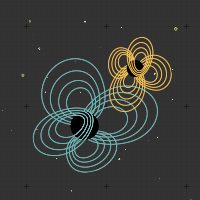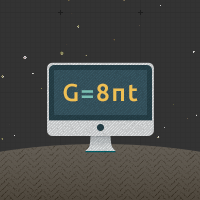G
G
General Theory of Relativity
Einstein's version of the laws of physics, when there is gravity. Building on the Special Theory of Relativity, this theory generalizes Einstein's work so that the laws of physics must be the same for all observers, even in gravity. Einstein showed that gravity is best understood as a warping of the geometry of spacetime, rather than as a pulling of objects on each other. The crucial idea is that objects move along geodesics — which are determined by the warping of spacetime — while spacetime is warped by massive objects according to the formula \(G = 8 π T\).
Geodesic
Essentially the "straightest path" in a curved space or curved spacetime. This is the path followed by an object with no forces acting on it. In the curved spacetime of General Relativity, these paths may seem to be very curved — even appearing as circles or ellipses, for example. A geodesic is easily understood by looking at a very small region around the object. Even in highly curved spacetime, a small enough region will seem flat, so there is a natural idea of a "straight path". By following short segments, the whole geodesic is built up into one long path.
Gravitational Wave
A gravitational disturbance that travels through space like a wave. This type of wave is analogous to an Electromagnetic Wave. Gravitational waves are given off by most movements of anything with mass. Usually, however, they are quite difficult to detect. Physicists are currently working hard to directly detect gravitational waves. Experiments like LIGO and LISA are designed for this purpose.




